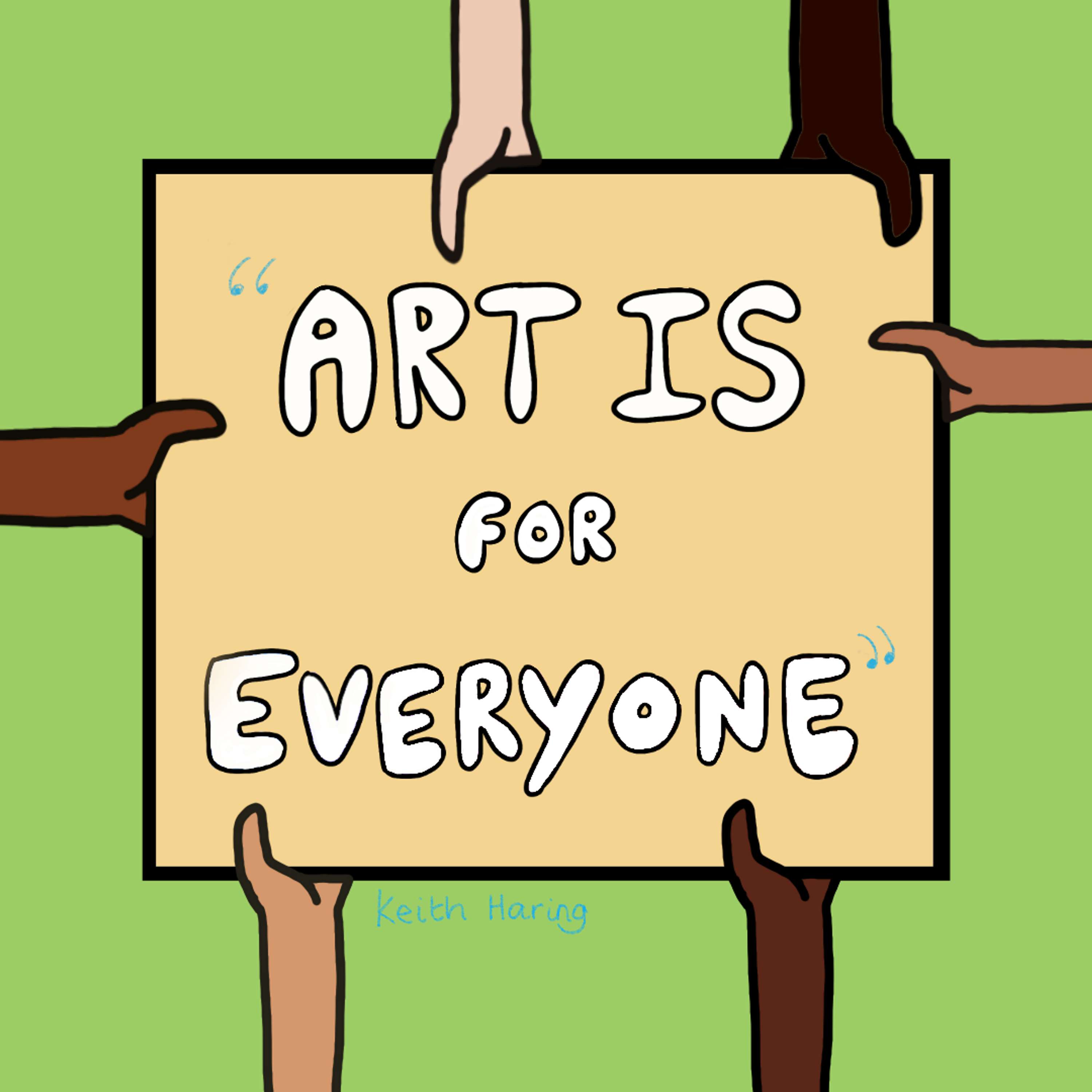Keith Haring's art is a vibrant celebration of life, love, and social activism that continues to resonate with audiences around the globe. Emerging from the bustling streets of New York City in the early 1980s, Haring's work is characterized by bold lines, bright colors, and dynamic figures that seem to jump off the canvas. His unique style, often influenced by graffiti culture and street art, turned public spaces into a living gallery, spreading messages of joy and awareness about pressing social issues.
At the core of Haring's creations is a commitment to accessibility; he wanted his art to be understood and embraced by everyone, regardless of background. From his iconic dancing figures to his heart motifs, each piece carries a sense of urgency and a call to action. As we unpack the vibrant world of Keith Haring, we delve deeper into how his art moved people then and continues to move us today.
The Rise of Keith Haring
Keith Haring emerged as a powerful voice in the art scene during the early 1980s, a time when New York City was pulsating with creativity and cultural change. Growing up in Pennsylvania, Haring was deeply influenced by street culture and the vibrant energy of urban life. His move to New York to study at the School of Visual Arts positioned him amidst the city's dynamic art community, where he quickly became entwined with the burgeoning subcultures surrounding graffiti and hip-hop.
Haring's artistic style was characterized by bold lines, bright colors, and a sense of movement that conveyed joyous expressions. He began to gain recognition with his chalk drawings in the vacant advertising panels of subway stations, creating public art accessible to everyone. These spontaneous artworks, often infused with social commentary, allowed him to connect with a diverse audience and spread messages of love, acceptance, and awareness of pressing social issues such as AIDS and apartheid.
As his work gained visibility, Haring began to expand his artistic repertoire, moving from public spaces to galleries and large-scale murals. His iconic imagery, featuring dancing figures, barking dogs, and radiant babies, transcended traditional artistic boundaries and spoke to the human experience. Haring’s ability to fuse art and activism further propelled his rise, transforming him into an influential figure whose work continues to resonate today.
Iconic Imagery and Themes
Keith Haring's art is instantly recognizable for its bold lines, vibrant colors, and iconic figures. His signature motif of dancing figures creates a sense of movement and energy that resonates deeply with viewers. These lively characters often interact in ways that suggest joy and celebration, symbolizing the interconnectedness of humanity. Through these simple yet powerful images, Haring transcends language barriers, making his art accessible to a global audience.
Another prominent theme in Haring's work is the exploration of social issues, particularly related to LGBTQ+ rights, AIDS awareness, and anti-apartheid advocacy. His art often functions as a form of activism, using visual language to address topics that were often marginalized in mainstream conversations. Each piece serves as both a reflection of the struggles faced by these communities and a call for solidarity and change, reinforcing Haring's belief in art as a means of promoting social justice.

Additionally, Haring's incorporation of graffiti and street art elements into his work highlights the importance of public spaces in his artistic vision. He viewed public art as a powerful tool for communication, aiming to engage the community and inspire dialogue. The interplay between his vibrant compositions and urban settings encourages an interactive experience, where viewers become part of the artwork's narrative, reinforcing Haring's legacy as a pioneer who brought art beyond gallery walls and into the everyday lives of people.
Legacy and Influence in Contemporary Art
Keith Haring's art has left an indelible mark on the contemporary art scene, transcending the boundaries of traditional mediums and styles. His distinctive use of vibrant colors, energetic figures, and social commentary resonates with artists today, inspiring a new generation to embrace the power of art as a vehicle for change. Haring's ability to blend art and activism has paved the way for contemporary artists to tackle pressing social issues through their work, fostering a sense of responsibility and urgency.
Moreover, Haring's work has become synonymous with the street art movement, reinforcing the idea that art can exist outside galleries and museums. By using public spaces as his canvas, he transformed urban environments into platforms for dialogue and expression. This approach has influenced countless street artists and muralists who draw on Haring’s legacy to communicate their messages in similarly impactful ways. Today, public art initiatives often pay homage to Haring’s ethos, bringing art back to the communities that it reflects and represents.
Haring's art continues to be celebrated through exhibitions, merchandise, and cultural events that emphasize his contribution to both art and social causes. Organizations and foundations dedicated to his work ensure that his messages around love, tolerance, and activism remain relevant. By integrating Haring's philosophy into contemporary artistic practices, artists maintain a dialogue with the past while addressing the complexities of modern society, proving that his influence will endure as a vital part of the cultural landscape.
